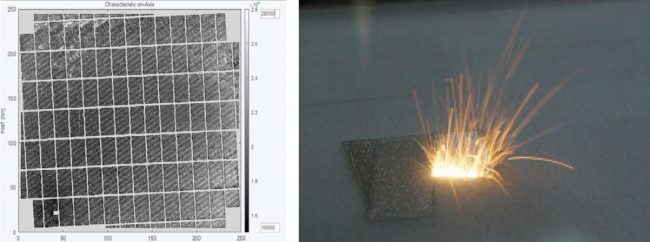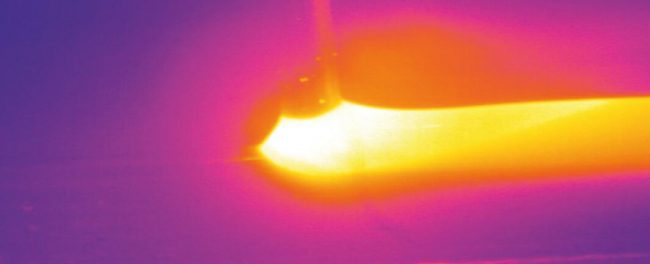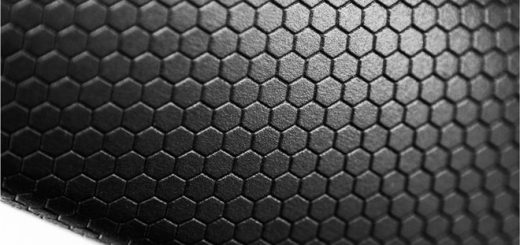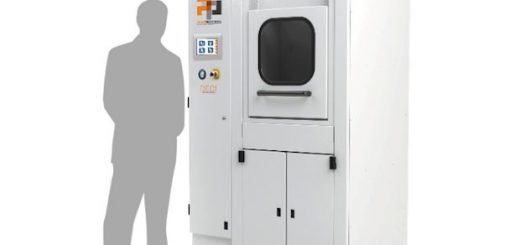Quality Assurance in Additive Manufacturing
Industial users use the associated freedom in component design as well as the rapid feasibility in prototype construction with additive processes. Additive manufacturing with metals or plastics offer companies new possibilities with a high degree of geometric flexibility. In order to make optimal use of the manufacturing process in series production, essential prerequisites must be fulfilled.
![]() plasmo helps to better understand these manufacturing processes and provides deep insights into the respective components with its quality assurance solutions.
plasmo helps to better understand these manufacturing processes and provides deep insights into the respective components with its quality assurance solutions.
In addition to an understanding of the manufacturing processes, knowledge of achievable possibilities, component direction-dependent mechanical-technological properties and the application of suitable quality assurance systems is indispensable. In this way, defective parts can be detected when they occur. The additive processes are used in sectors such as aerospace, energy technology, petrochemical, automotive, tool- and mold making, and medical technology.
plasmo’s many years of experience in the field of thermal joining processes can be transferred to additive manufacturing applications. The special adaptation of the QA systems for additive manufacturing has been developed and implemented at plasmo since 2010 and supported in many cooperation projects with industrial and scientific partners. Commercial plasmo systems have been in use on the market in the Powder Bed Fusion segment since 2016.
plasmo quality assurance systems support customers to not only provide the necessary safety but also offer many other advantages such as the reduction of testing costs. This contributes to plasmo’s clear vision for the future: to develop new concepts together with system manufacturers for the two application areas of Powder Bed Fusion and Direct Energy Deposition.In addition to more intelligent construction processes (e.g. feedforward control), plasmo is working with system manufacturers and the scientific community on the faster, sustainable qualification of processes and their standardization.
![]() Additive processes PBF and DED
Additive processes PBF and DED
Additive manufacturing processes can be divided into powder bed-based processes (Powder Bed Fusion/PBF) and direct energy deposition (DED) processes – e.g.laser metal deposition or wire-based processes. Which manufacturing process is used depends, for example, on the size of the structures of the components. PBF enables smaller structures with smaller volumes while DED processes usually enable larger volumes with higher application/deposition rates.
Due to the complexity of the tasks in both 3D printing processes, quality assurance is important and is a standard requirement for many companies. Quality criteria such as strength, dimensional accuracy, and surface quality can, depending on process parameters and requirements, be comparable in both processes. However, the different manufacturing processes require different QA systems based on the same physical principles.
![]() Quality Assurance for Powder Bed Fusion (PBF)
Quality Assurance for Powder Bed Fusion (PBF)
For the PBF process, several quality monitoring systems were developed in cooperation with EOS and successfully placed on the market: EOSTATE Powder-Bed, EOSTATE MeltPool and EOSTATE Exposure OT.
These offer deep insights into the respective components in real-time. In this way, component defects can be identified and the construction process can be stopped when a defect is detected.
EOSTATE PowderBed monitors the powder application in each layer by means of a camera and the correct exposure process after it has been completed,thus enabling control of the powder quantity applied.
 Meltpool Monitoring. Image via EOS, plasmo
Meltpool Monitoring. Image via EOS, plasmo
EOSTATE MeltPool records the process emissions in the visible and near infrared range and thus enables the detection of process irregularities with the highest geometric and temporal resolution.
EOSTATE Exposure OT determines the temperature radiation of the construction process of the applied layer in the near infrared range and detects process irregularities in the thermal image of the exposure process including the thermal memory of the underlying layers.
![]() Quality assurance for deposition welding (DED)
Quality assurance for deposition welding (DED)
In the Direct Energy Deposition process, plasmo systems enable the detection of process irregularities through sensor- and camera-based technologies (processobserver,plasmoeye, profi leobserver). Furthermore, processing positions as well as plant and process parameters are recorded.
The processobserver records the process emissions in the visible and near infrared range and thus enables the detection of errors or deviations.The camera-based system „plasmoeye“ from plasmo enables the visual representation and documentation of the DED process in real time, whereby parameters such as melt pool and/or dimensions are detected. Using cameras in the near infrared range, temperature distributionand cooling in the solidifi ed area are evaluated in order to draw conclusions about the quality. Furthermore, possibilities for closed-loop control are developed by recording the IR spectrum.
 QA with plasmoeye. Image via plasmo
QA with plasmoeye. Image via plasmo
With the plasmo profileobserver, the geometry per layer/layer or the geometry of the entire component is determined. This makes it possible to check the position of the processing head from layer to layer as well as the dimensional accuracy and number of layers required. Depending on the quality criteria the different plasmo inspection systems can be fl exibly combined in order to fi nd the appropriate inspection method for DED procedures for the most diverse applications.
Source: plasmo




Recent Comments